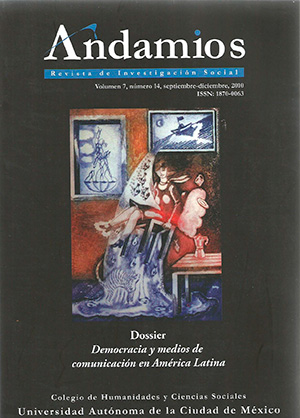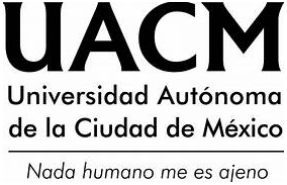LOS SABERES HOY: DESAFÍOS Y APUESTAS
DOI:
https://doi.org/10.29092/uacm.v7i14.111Abstract
El alcance de un saber particular en nuestro mundo actual acarrea riesgos, ya que podría convertirse en un dogma único a partir del cual los sabe- res ajenos se manifestarían como inferiores. Para iniciarse en esos riesgos, se puede observar que si bien el saber científico importa hoy día, más allá de él se encuentra la representación de nuestro mundo actual “como un período de transformación radical”, debido justamente a los constantes adelantos del saber. Es dentro de esa comprensión que este artículo cuestiona la presencia de lo que se denomina la “sociedad de la información”, la cual disgrega fundamentalmente a la sociedad industrial que conocemos.
A pesar de la diversidad existente entre las sociedades, la sociedad de la información une a todas ellas bajo un lema, invitando, supuestamente, a un mejor porvenir. A pesar de esas promesas, la definición de dicha sociedad es ambigua, aunque en la “Declaración de principios” de la “Cumbre Mundial sobre la Sociedad de la Información” (Naciones Unidas, 2003) se perfila claramente un proyecto caracterizado por su uniformización dentro del cual el saber puede ser producido, comerciado, gestionado y enviado a todos las puntos del planeta.
El artículo que a continuación se presenta propone una mirada crítica de la historia de las tecno-ciencias y del proyecto que con ellas se ha ido construyendo. Es fundamental el valorar la posible eficacia universal y social de dichos propósitos, ya que el fin de este mensaje al volverse repetitivo, corre el riesgo de ser aceptado como una realidad, prescindiendo de una profunda reflexión.
La concepción de un “futuro-ya-presente” inspirada por el saber tecno- científico constituye el poder de una innovación sin fronteras, sin contornos, razón por la cual este texto de Gérald Berthoud, profesor emérito de la Universidad de Lausana, por muchos años miembro activo y hoy asesor del Movimiento Antiutilitarista de las Ciencias Sociales (MAUSS), parte de una vasta investigación consagrada al estudio de la tradición y de la modernidad en diversos países, mostrando aquí la trayectoria y los corolarios de las pretensiones de las tecno-ciencias, así como los riesgos de un proyecto de sociedad sin pasado y sin presente, interrogaciones sobre las cuales el autor nos invita a reflexionar.
Downloads
References
BERTHOUD, G., ISCHY, F., SIMIONI, O. (2002), La société de l’information: la nouvelle frontière?, Lausana: Université de Lausanne (Pratiques et Théories des Sciences et des Techniques VII).
BROOKS, R. A. (2002), Flesh and Machines: How Robots will Change Us, Nueva York: Pantheon Books.
COENEN, C., RADER, M., FLEISCHER, T. (2004), “Of Visions, Dreams and Nightmares: The Debate on Converging Technologies. Report on the Conference ‘Converging Technologies for a Diverse Europe’”, en Technikfolgenabschätzung-Theorie und Praxis, núm. 3, 14-15 de septiembre, Bruselas: Institut für Technikfolgenabschätzung und Systemanalyse (ITAS), pp. 118- 125.
DUMONT, L. (1992), “Anthropologie, totalité et hiérarchie”, en Philosophie et anthropologie, París: Centre Georges Pompidou, pp. 11-24.
__________ (1994), “Rétrospection. L’enseignement de l’Inde: le tout et les parties”, en Carlo Mongardini, Marieli Ruini (eds.), Religio: ruolo del sacro, coesione sociale e nuove forme di solidarieta nella societa contemporanea, Roma: Bulzoni, pp. 239-250.
DUPUY, J. P. (2004), “Quand les technologies convergeront”, en Revue du MAUSS (Mouvement anti-utilitariste dans les sciences sociales), núm. 23, primer semestre, París: MAUSS, pp. 408-417.
DYSON, G. B. (1998), Darwin among the Machines: The Evolution of Global Intelligence, Nueva York: Perseus.
FERGUSON, A. (1992) [1767], Essai sur l’histoire de la société civile, París: Presses Universitaires de France (PUF).
GAUCHET, M. (1998), “Essai de psychologie contemporaine, I. Un nouvel âge de la personnalité”, en Le Débat, núm. 99, marzo-abril, París: Gallimard, pp. 164-181.
GOODY, J. (1999), “Technologies of the Intellect: Writing and the Written Word”, en The Power of the Written Tradition, Washington y Londres: Smithsonian Institution Press, pp. 132-151.
GREGORY, S. P., COX E. (1996), Beyond Humanity: Cyberevolution and Future Minds, Cambridge, Mass.: Charles River Media.
GUILLEBAUD, J. C. (2001), Le principe d’humanité, París: Seuil.
HORN, R. E. (2004), “To think Bigger Thoughts: Why the Human Cognome Project Requires Visual Language Tools to Address Social Messes”, en Annals of the New York Academy of Sciences, núm. 1013, Nueva York: New York Academy of Sciences, pp. 212-220.
HOTTOIS, G. (1987), “Ethique et technoscience: entre humanisme et évolutionnisme”, en J. P. Naisse (ed.), Science et éthique, Bruselas: Editions de l’Université de Bruxelles, pp. 7-27.
__________ (1994), “Jeux de langage et pratiques technoscientifiques”, en Gilbert Hottois, Maurice Weyembergh (eds.), Richard Rorty. Ambiguïtés et limites du postmodernisme, París: Vrin, pp. 139-180.
HUME, D. (1993) [1740], La morale. Traité de la nature humaine III, París: Flammarion.
KURZWEIL, R. (2000), The Age of Spiritual Machines. When Computers exceed Human Intelligence, Nueva York: Penguin.
LAFONTAINE, C. (2004), L’empire cybernétique. Des machines à penser à la pensée machine, París: Seuil.
LEROI-GOURHAN, A. (1965), Le geste et la parole. La mémoire et les rythmes, París: Albin Michel.
LÉVI-STRAUSS, C. (1973), Anthropologie structurale deux, París: Plon.
__________ (2003), “Ramener la pensée à la vie”, en Magazine Littéraire, Fuera de Serie, núm. 5, octubre-diciembre, París: Magazine Littéraire, pp. 53-59.
MAUSS, M. (1968), Œuvres 1. Les fonctions sociales du sacré, París: Minuit.
__________ (1996), “L’œuvre de Mauss par lui-même”, en Revue Européenne des Sciences Sociales, núm. 105, Ginebra: Droz, pp. 225-236. (Publicado originalmente en Revue Française de Sociologie, vol. 20, núm. 1, 1979, pp. 209-220).
MERLEAU-PONTY, M. (1953), Eloge de la philosophie et autres essais, París: Gallimard.
__________ (1964), “El filósofo y la sociología”, en Signos, Barcelona: Seix Barral, pp. 117-135.
MORAVEC, H. P. (1998), Robot: Mere Machine to Transcendent Mind, Oxford: Oxford University Press.
MORIN, E. (2001), L’identité humaine, París: Seuil.
PORTMANN, A. (1951), “Les bases biologiques d’un nouvel humanisme”, en Être et penser. Cahiers de philosophie, núm. 32, Neuchâtel: Baconnière, pp. 59-79.
REES, M. (2003), Our Final Century: Will the Human Race Survive the 21st Century?, Londres: William Heinemann.
RICŒUR, P. (1985), Temps et récit 3. Le temps raconté, París: Seuil. ROCO, M. C., MONTEMAGNO, C. D. (eds.) (2004), “The Coevolution of Human Potential and Converging Technologies”, en Annals of the New York Academy of Sciences, núm. 1013, Nueva York: The New York Academy of Sciences.
SEGAL, J. (2003), Le Zéro et le Un. Histoire de la notion scientifique d’information au 20e siècle, París: Syllepse.
TODOROV, T. (1995), La vie commune. Essai d’anthropologie générale, París: Seuil.
WIENER, N. (1952), Cybernétique et société, Paris: Deux-Rives.
__________ (1954), The Human use of Human Beings. Cybernetics and Society, Nueva York: Doubleday.
__________ (1965), “L’homme et la machine”, en Le concept d’information dans les sciences contemporaines, Cahiers de Royaumont. Philosophie, núm. V, París: PUF/Gauthier-Villars, pp. 99-105.
__________ (1971), Cybernétique et société. Edition synoptique. L’usage humain des êtres humains, París: Union Générale d’Edition (UGE) (10-18). WINKIN, Y. (2001), Anthropologie de la communication. De la théorie au terrain, París: Seuil.
Published
Issue
Section
License
This Journal is licensed under Creative Commons Mexico 2.5. It is allowed to reproduce and disseminate the contents of the Journal for educational or research purposes, not for profit, as long as they are not mutilated and cite the source (Andamios, Revista de Investigación Social) and the author.
The copyright of the articles published in Andamios, Revista de Investigación Social are transferred by the author(s) to Universidad Autónoma de la Ciudad de México when the originals have been accepted, so that they are published and distributed both in the printed and electronic versions of the Journal. However, as established by law, the author(s) retains their moral rights. The author(s) will receive a form of assignment of copyright that they must to sign when their original has been accepted. In the case of collective articles, the signature of one of the authors will suffice, provided that the latter has obtained the consent of the others.
Authors may use the material of their article in other works or books published by themselves, with the condition of quoting Andamios as the original source of the texts.
The articles contained in this publication are the responsibility of their authors and do not compromise the official position of Andamios, Revista de Investigación Social of the Universidad Autónoma de la Ciudad de México.


